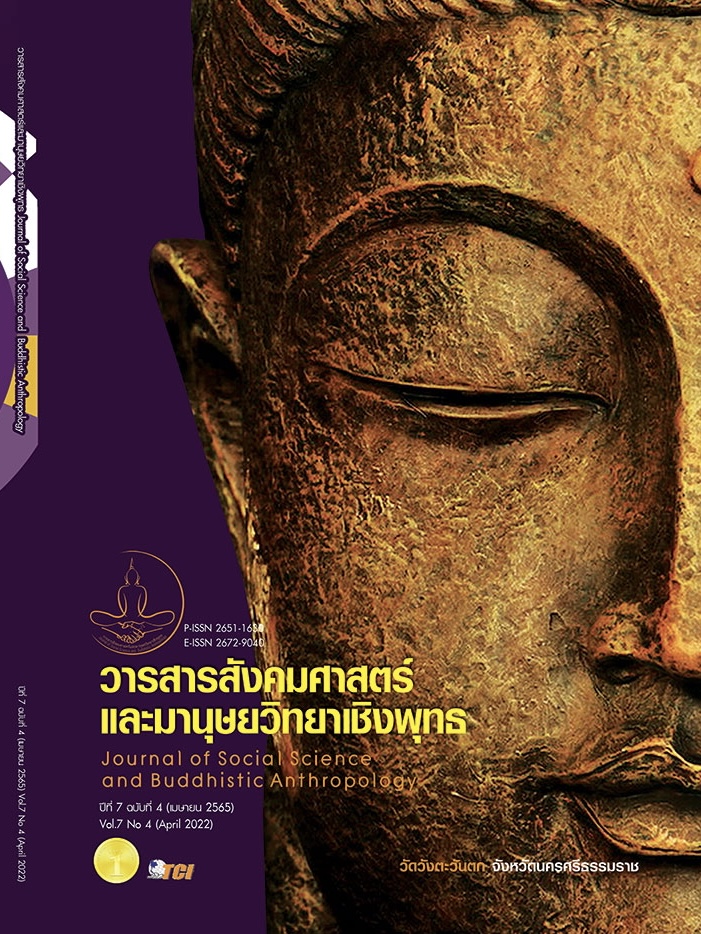DEVELOPMENT OF COMPUTER PROGRAMS FOR JUDGING ATHLETICS OF COURTYARD TYPE OF COMPETITION DECISION RESULTS WITH DISTANCES
Keywords:
Program Development, Athletics Judgment, Distance Race ResultsAbstract
The objectives of this research article were to 1) analyze, design and develop “A computer program for judging field athletics for long-distance competition” 2) compare the operating time between old and new developed software for judging field athletics 3) assess the user satisfaction with a new developed software for judging field athletics. It is Research and Development. The sampling group were consisted of a group of professional athletes judges, and staffs. Staffs and professional athletes judges were asked for information data on current processing methods and information demands. Data and facts from these two groups were collected through interviews and the collection of related works in order to analyze and design the program. The findings reveals that there are quality differences between a new developed system and previous system. The new developed system has the potential to decrease processing steps, errors, duplicated information, and quantity of documents. Besides, the new developed system is more practical and user-friendly. The interpretations of reported papers are more correct and simply to comprehend. Moreover, the system can record and collect data in a secure manner. According to the comparison of operating time between a previous and a new developed system, it indicates that the previous system’s operating time of registration of 10 athletes takes 10 minutes while the new developed system takes 3 minutes, saving time by 7 minutes (represented as 70 percent). According to the experiment of statistic records and rearrange of competitive ranking orders, it shows that the previous system spends 5 minutes while the developed system spends 1.30 minutes which decreases to 3.30 minutes per round (presented as 66 percent). According to the comparison of software satisfaction, it illustrates 4.75 of average score, which is the highest level. The result of the user satisfaction comparison with system efficiency reveals that the user satisfactions with new system’s efficiency are higher than the previous system in all aspects.
References
การกีฬาแห่งประเทศไทย. (2558). กติกากีฬากรีฑา. กรุงเทพมหานคร: กองวิชาการการกีฬา การกีฬาแห่งประเทศไทย.
นภัทร รัตนนาคินทร์. (2558). การวิเคราะห์และออกแบบระบบ. กรุงเทพมหานคร: ซีเอ็ดยูเคชัน.
ปณิธาน เมฆกมล. (2555). เอกสารประกอบการสอนวิชาการเขียนโปรแกรมคอมพิวเตอร์ทางธุรกิจเบื้องต้น. อุดรธานี: มหาวิทยาลัยราชภัฏอุดรธานี.
อรอนงค์ อิสระนรากุล และชุติมา เบี้ยวไข่มุก. (2557). การเปรียบเทียบประสิทธิภาพของระบบสารสนเทศเพื่อการจัดการลงเวลาปฏิบัติงาน ของบุคลากรด้วยการสแกนลายนิ้วมือกับระบบบันทึกเวลาปฏิบัติงานของบุคลากร แบบเซ็นชื่อกรณีศึกษา โรงเรียนระแงะ อำาเภอระแงะ จังหวัดนราธิวาส. วารสารมหาวิทยาลัยสงขลานครินทร์ สาขามนุษยศาสตร์และสังคมศาสตร์, 1(2), 11-19.
โอภาส เอี่ยมสิริวงศ์. (2560). การวิเคราะห์และออกแบบระบบ. กรุงเทพมหานคร: ซีเอ็ดยูเคชัน.
โอภาส เอี่ยมสิริวงศ์ และสมโภชน์ ชื่นเอี่ยม. (2558). การวิเคราะห์และออกแบบระบบ. กรุงเทพมหานคร: ซีเอ็ดยูเคชัน.
Alan D. et al. (2012). Systems analysis and design. (5th ed). the United States of America: John Wiley & Sons, Inc.
Chauhan, B. D. et al. (2017). Impact of development methodology on cost & risk for development projects. India: Curran Associates, Inc.
Pressman, S. (2001). Software Engineering – A Practitioner’s Approach – Roger, Fifth Edition Published by McGraw-Hill. San Francisco St: McGraw-Hill Companies, Inc.
Saylor A. (2020). Business Information Systems: Design an Ap for That. Retrieved พฤษภาคม 15, 2564, from https://saylordotorg.github.io/text_business-information-systems-designan-ap-for-that/s05-information-systems-in-your-li.html
Downloads
Published
How to Cite
Issue
Section
License
Copyright (c) 2022 Journal of Social Science and Buddhistic Anthropology

This work is licensed under a Creative Commons Attribution-NonCommercial-NoDerivatives 4.0 International License.








